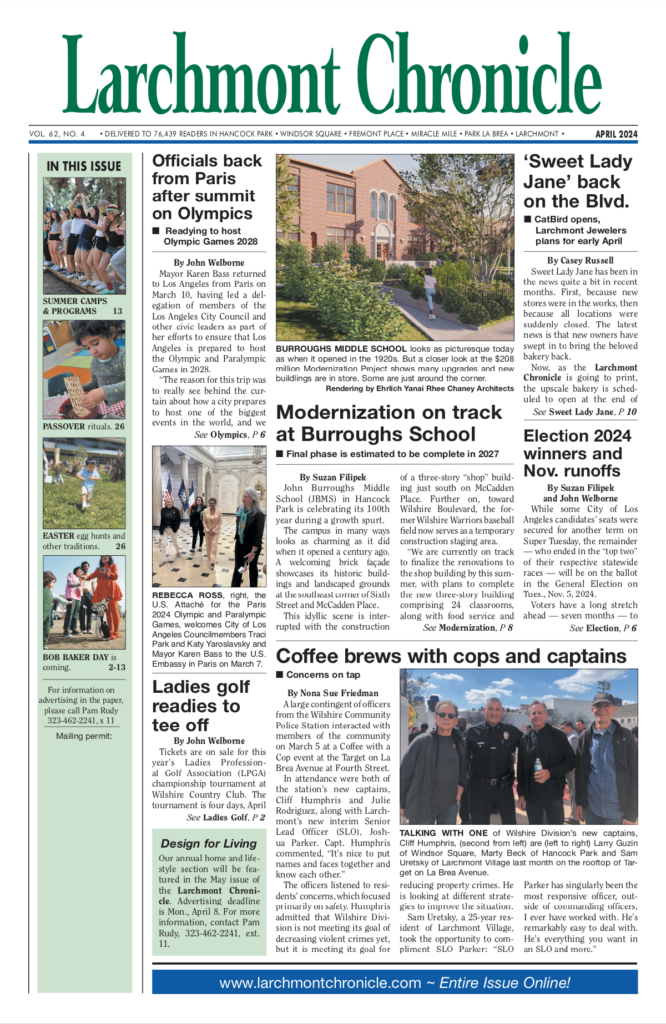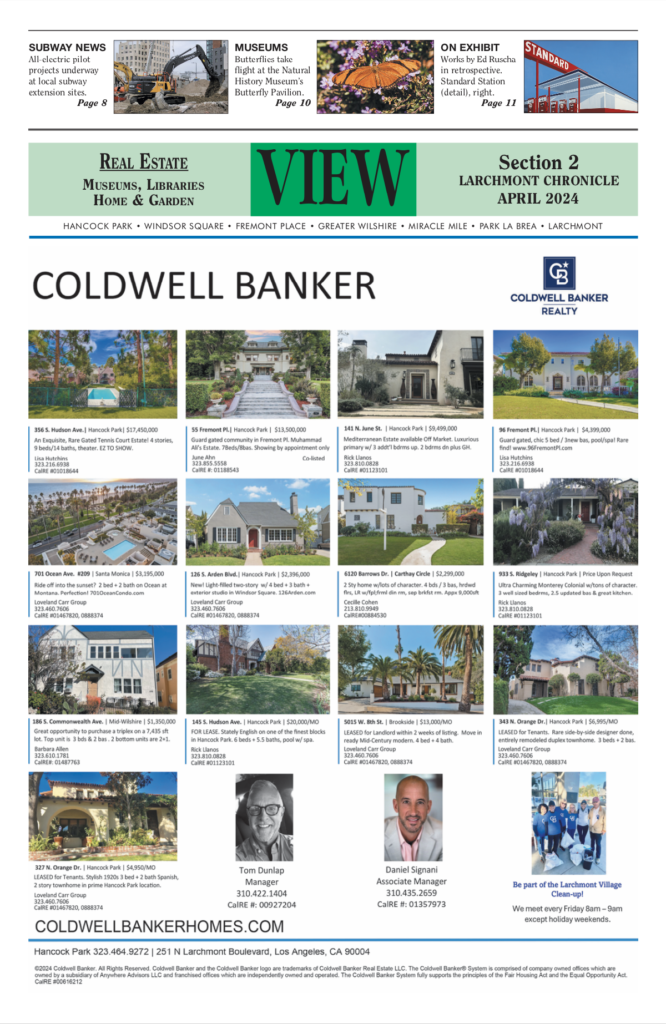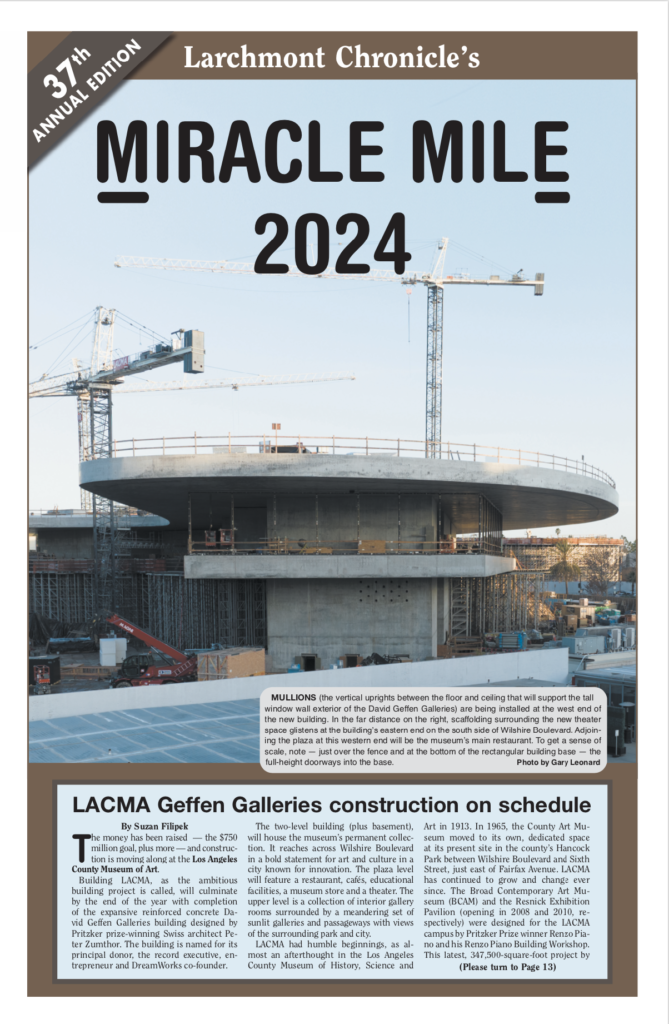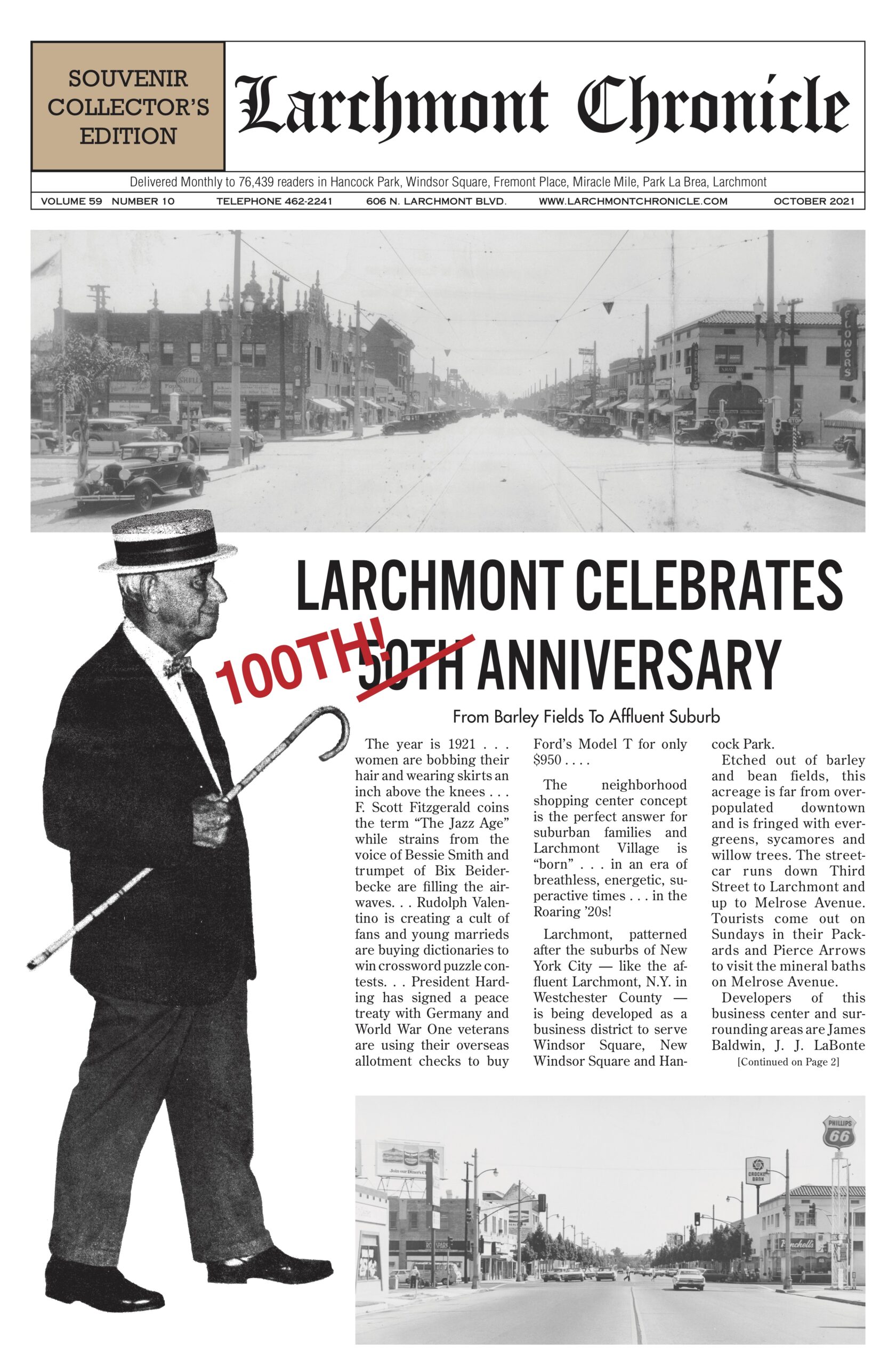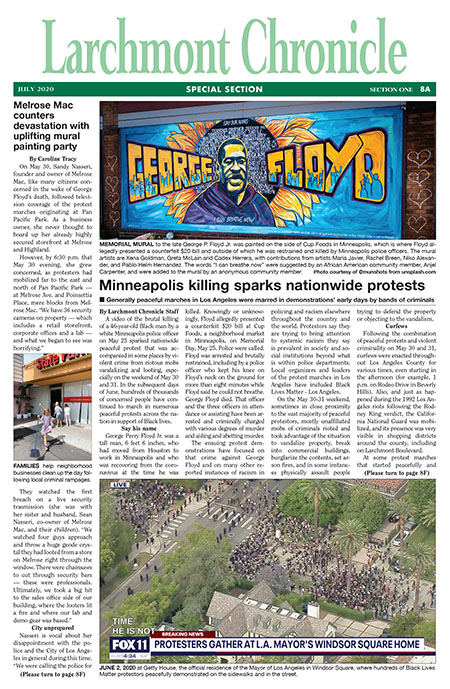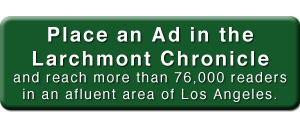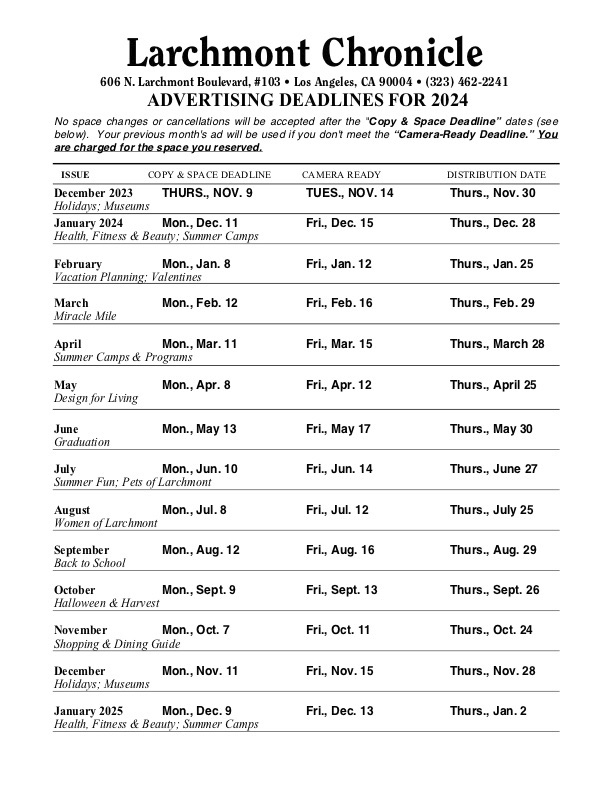Los Angeles: growing up with character, density?
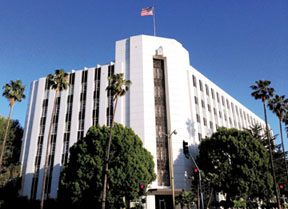
COMMUNITY CHARACTER TO BE SAVED. The new owner of the former Farmers Insurance headquarters tower has stated that it embraces the rich, irreplaceable heritage of this familiar landmark in the Park Mile. The owner’s plan is to adaptively reuse the former office building by repurposing the upper floors as new residential condominium units.
As part of the Larchmont Chronicle’s continuing coverage of a proposed anti-growth ballot initiative that seeks to ban much construction in the City of Los Angeles for two years, the Chronicle is reprinting a thoughtful and relevant article on how the Los Angeles Conservancy is addressing this matter. The article, now edited slightly, first appeared in the March/April issue of the “Los Angeles Conservancy News.”
Los Angeles is entering a new phase of growth and physical transformation, as a postwar landscape defined largely by open space and low-rise buildings gives way to the demand for density. Few large cities can lay claim to L.A.’s recent investment in public transit infrastructure and expansion. Los Angeles is changing at a rapid pace, and this will inevitably affect historic places.
How do we plan for this change and manage it in a thoughtful way, so that the places we cherish are retained as an integral part of this new wave of development, rather than being needlessly thrown away?
The Los Angeles Conservancy has been managing change in Los Angeles since our founding in 1978. Yet the magnitude of change we now face poses new challenges that are complex and interrelated. The wheels are in motion now, from upcoming policy decisions to potential ballot measures, that will greatly affect the future of historic places. We must start to address these issues before it’s too late.
Community character: the common denominator
Decisions about historic places don’t take place in a vacuum; they often relate to other issues such as housing. At the heart of these varying interests is a strong desire by residents to maintain the character and livability of their community.
Community character could be a tree-lined street of historic homes, a longstanding corner store and gathering place, or the neighborhood theatre. It could stem from a place’s architectural features, its social or cultural significance, or a combination. While hard to define, community character gives a neighborhood its context and meaning. It is particularly fragile in a fast-paced development environment like Los Angeles.
Balancing density and compatibility
As Los Angeles grows up—both figuratively and literally—it faces an ever-increasing demand for greater density. There are a lot of good reasons to embrace and support density, particularly along transit lines and near employment centers. Unlike other cities, L.A. can more easily build up, since plenty of surface parking lots and non-historic low-scaled commercial strip developments can accommodate larger and taller buildings. The key to preserving community character amid more density is to ensure compatibility between the old and the new.
High-rise development
Density is the name of the game in recent development, particularly downtown and in Hollywood. High-rise towers are being proposed or are under construction all over downtown. Hollywood has not seen its current level of development since Hollywood first came into existence.
The Conservancy typically does not weigh in on new construction projects. Yet we are increasingly stepping into this arena because of the cumulative effects these developments have on historic places. For instance, after more than a century as a remarkably cohesive neighborhood of mid-rise buildings, the Historic Core is being littered with high-rise towers of twenty to thirty stories that will dwarf their neighbors, introduce entirely new proportions, block iconic views, and create looming shadows. Even details that seem innocuous, such as projecting balconies on the main façade, change the feel of the street by making it seem more like Miami than the Historic Core.
The number of downtown high-rises that are proposed or already approved underscores the need for greater clarity and guidance. To better direct this development, the Conservancy strongly believes that there is an urgent need to revisit and update the City’s Downtown Design Guidelines.
Background buildings
If you’ve noticed a negative change in your local commercial area but can’t put your finger on the source, it could be the rapid disappearance of what we call “background buildings.” Background buildings are modest, small-scale, yet distinctive structures that create the overall feel of a street or neighborhood. They may not be individually significant, but collectively, they help define the character of a community.
One by one—or block by block—background buildings are being replaced with mid-rise developments that can seem sterile and disconnected from the existing community context. Where and how to place density is more art than science. Instead of the blunt instrument of massive razing and redevelopment, we need a more surgical approach that integrates new development into an existing context. The Conservancy is working to spotlight this issue through a historic preservation sub-committee of the Zoning Advisory Committee for re:code LA, the multi-year effort to rewrite the City’s outdated zoning code.
Mansionization
Mansionization is nothing new, yet it is an incredibly important trend that shows no signs of slowing. Many proponents of teardowns and mansionization claim that building larger homes in older neighborhoods increases density. Yet not everything touted as “density” really is density. Countless older homes have been demolished and replaced with massive, out-of-scale new houses—adding square footage, not density. Older neighborhoods rich in character are most vulnerable to this trend due to location and land values.
The City is working on amendments to its Baseline Mansionization Ordinance (BMO) and a new Single Family Zone that hopefully will create more incentives to retain existing houses, rather than replacing them with new ones. The initial passage of the BMO in 2008 was an important first step, but now is the time for strengthening this tool to make sure it works as intended.
Where there’s a will…
To say the “growing up” of Los Angeles needs a big-picture perspective is an understatement. The issues introduced here (and others) are converging to change how our city looks, feels, and functions for generations to come.
The Conservancy will continue advocating for sound planning that allows neighborhoods to adapt for density without losing their character. As we continue this important conversation, we’ll need everyone’s help as we ultimately advance strategies and possible solutions. We believe that with enough vision, collaboration, and sheer will, Los Angeles can reach a new level of maturity that embraces its rich, irreplaceable heritage.
By Adrian Scott Fine and Cindy Olnick
Adrian Scott Fine is director of advocacy for the Los Angeles Conservancy, a nonprofit historic preservation organization serving all of Los Angeles County. Cindy Olnick is the Conservancy’s director of communications. Article © 2016 Los Angeles Conservancy. All rights reserved. Reprinted with permission.
Category: News

